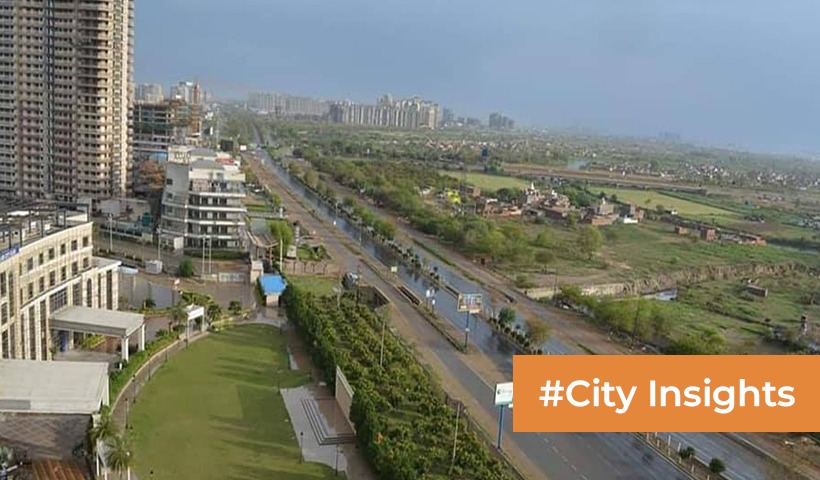Using Color Codes to Decode Land Zones
Authorities often use multiple zoning colors to represent land banks within a city or town. It might be confusing to decode a map when looking at different colors. Here is a guide you need to refer to understand colors and their significance better.
What is Zoning?
The use of demarcation of land by legislation to mark vast land estates for varied purposes is popularly known as zoning. Zoning is a necessary method that helps with urban planning to help cities and towns grow. Land parcels can be divided into industrial, residential, and commercial zones.
Zoning is a method that is compulsory by law and used by local authorities to use land parcels for specific purposes. The absence of zoning could lead to reckless and unregulated use of land. It can be noted that zoning prevents illegal constructions and unlawful land activities. The Government authorities can amend zoning laws as they see fit.
Classification of Zoning
Different types of land parcels are allocated to a different zone. They are:
- Commercial zones represent office spaces.
- Residential ones represent housing spaces.
- Agricultural zones represent farming areas.
- Retail zones represent shopping complexes and malls.
- Public and semi-public zones are allocated to the development of infrastructure.
- Factories and heavy manufacturing units are earmarked for Industrial zones.
- Services and utility zones are assigned to basic infrastructure.
- Mixed land usage is given to urbanized development.
- Playgrounds and parks represent green and open spaces.
Zoning colors and their Meaning
There are various zoning colors and their meaning. You need to understand and read through this guide to be precise in identifying zones. The multiple zones include:
- Light yellow: This color represents residential use of land. It could be only residential or mixed.
- Dark yellow: It represents the mixed residential properties. Mixed residential properties mean a commercial mix of essential services such as clinics and grocery stores in this zone. About 33% of commercial services are allowed in such zones.
- Red: This color indicates a semi-public or public utility area for temples and educational institutions like schools and colleges.
- Green: Greenery and agricultural zones are represented by green. Green can also signify forests, lakes, ponds, gardens, and valleys.
- Light blue: The light blue color represents commercial areas such as Central business districts, offices, etc.
- Dark blue: This color represents retail areas like malls, hotels, movie theaters, and eateries like restaurants and cafes.
- Light purple: This color represents zones meant for industrial purposes and establishments.
- Dark purple: This color represents zones meant for high technology industries.
- Gray: The color gray represents zones meant for heavy industries.
Monochrome Codes on Maps for Zoning
You might find some monochrome colors on the maps. Planners use these for land mapping and differentiated land zones. Open space or recreational areas are left blank or sparsely patterned, while hatched patterns imply denser land usage with heavier patterns.
– A cross hatches with a darker pattern indicate a residential zone.
– Slanted lines and darker patterns indicate a commercial zone.
– Points, diamonds, and stars represent land used for industrial, transportation, and utilities.
– Vertical lines are used to represent land for public use.
– Stipple patterns are used to indicate parks and recreation.
– Curved lines are used to represent agricultural zones.
Conclusion
In India, there is a more integrated approach to land mapping than a Euclidean approach. For example, a mixed residential zone has commercial establishments such as restaurants, hotels, stores, and malls. Understanding these zones is crucial for anyone interested in buying a house as it provides insights into the surrounding environment and amenities. Therefore, you need to refer to this article to decode land zones represented by various colors.
Frequently asked questions
What is the meaning of zoning, and how does it help?
It is the demarcation of land parcels into various sections to indicate the purpose for which the land can be used. Zoning is beneficial for the authorities to regulate and control land development at a local and national level. Zoning helps the citizens of a town or a city by indicating the purpose of the land, which promotes buying or investment. This promotes multi-dimensional growth.
What are the different types of zones?
Land parcels are divided into various zones. They are residential zones, commercial zones, industrial zones, mixed residential zones, agricultural zones, public utility, and more.
What are the different colors used to indicate the other zones?
When you go through a map, you will see a lot of colors that indicate the zone and its purpose. The different colors used are yellow for residential land, red for public utility land, green to mark agricultural or forest land, dark blue indicates retail zones, light blue indicates commercial zones, and purple indicates industrial zones.
Disclaimer: The views expressed above are for informational purposes only based on industry reports and related news stories. PropertyPistol does not guarantee the accuracy, completeness, or reliability of the information and shall not be held responsible for any action taken based on the published information.




